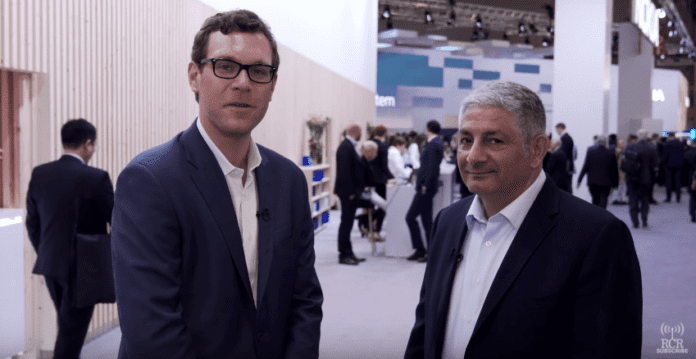Nokia discusses the role of virtualization from the EPC to the baseband unit
The explosion of connected, smart devices, coupled with unyielding demand from consumers and enterprises for mobile data, is having a profound impact on how operators deploy and manage increasingly converged networks. 5G, with software-controlled network slices and massive capacity, will solve these challenges. But, as 5G continues to go through the standardization and trial processes, there are options available to service providers that will lay the groundwork for next-generation mobile networks while delivering immediate benefits.
During Mobile World Congress 2017, Houman Modarres, head of product marketing for Nokia’s IP portfolio, laid out four major trends impacting telecom today: the proliferation of endpoints, automation, performance and efficiency, and security.
“The networks are fundamentally different as we go beyond connecting people to people. We have to kind of rethink networks, particularly how we share networks between fixed and wireless, between licensed and unlicensed and shared, different hybrid and multi-access technology.” This level of complexity necessitates NFV- and SDN-based automation, he explained. “If these networks are going to be this expansive, then we have to also rethink the way in which we devise and operationalize networks so they can be…far more dynamic.”
This new network will be designed to support virtually any service with any type of requirements with an on-demand data pipe. Creating these bespoke connections requires a disaggregation of software–“Put it in different places so it can scale in and out appropriately, so that not only can the needs of the application be met, but also…you can do it economically,” Modarres said.
Finally, to security, he said, “as you get this dynamic, expansive set of opportunities, it also opens the door for bad elements to enter. The idea here is we have to look at different ways for analytics and forensics to identify and isolate these threats to make these different IoT ideas realities at scale.”
Taken as a whole, the challenge here is to provide a robust, scalable network capable of handling an explosion of IoT devices and all the service requirements that go along with it, while letting software take control of management functions in a way that protects your network and your customers. The solution starts with virtualization at the most fundamental network level-the evolved packet core (EPC).
Modarres said Nokia’s virtualized EPC solution, the Cloud Packet Core, “is a critical part of getting IoT right. It’s a hub of this intelligent interconnectivity.” The solution supports converged network access technologies in a cloud native environment, moving beyond just virtualization. “You’ve got to really do the true software disaggregation so different parts of an application can sit where they best belong, can be sized and dimensioned, lifecycle managed and operated separately. You add on top of that a shared common data layer that can provide the resiliency as well as the performance. Then it starts to get really exciting.”
Another exciting evolution in telecoms is the move from static backhaul to a more flexible, unified design. Operators looking to simplify operations while optimizing spectral efficiency and utilization have embraced centralized RAN and even cloud-based RAN in which the baseband units are pooled and remote radio units are connected via fronthaul.
In the context of transport, “we look at this not just as fronthaul or backhaul,” Jim Guillet of Nokia product marketing said “we look at the whole end-to-end as a one architecture. As a single architecture, what we can bring is expertise on all the different technology sets, whether it’s microwave, IP, optical, Passive Optical Network (PON), even in-band millimeter wave mobile backhauling. We can build you a single architecture drawing on whatever attributes you need from these technologies.” Click here to learn more about Nokia’s Mobile Anyhaul solution.
With this new anyhaul architecture pumping increasing volume and variety of data through a cloud native packet core, operators can quickly deliver cutting-edge, high-quality services at-scale today, while preparing for what the IoT and 5G future will bring.
Modarres expounded on that vision: “Nokia’s view of the future is of a hyperconnected world liberated by technology. We want to make the world a better place. For us, simply, we think a better-connected world could be safer, more aware, more prosperous, and all around better. We’ve made big bets in areas like IoT, cloud and the path to 5G. We have all the tools within this ecosystem.”

